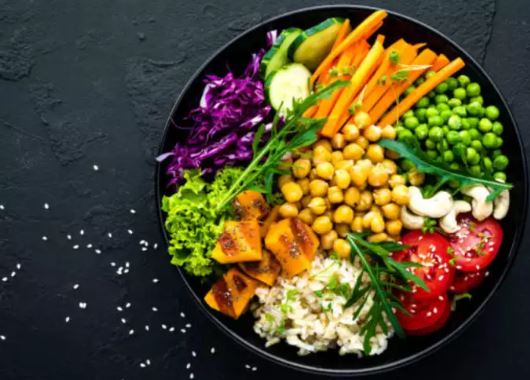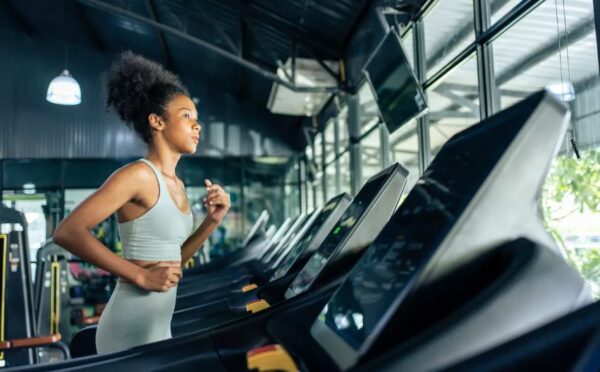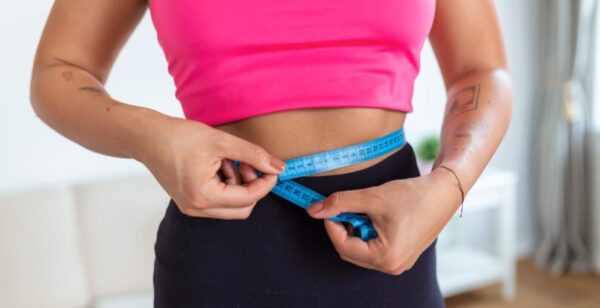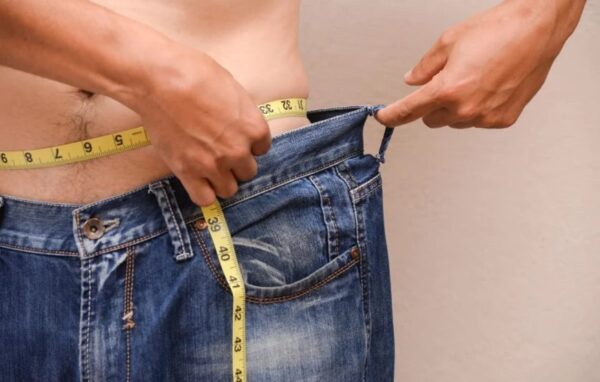Lifestyle
Here’s how your food plate should look like when you’re on a weight loss mission

Weight loss has two important aspects: diet and physical activity.
Only when both these aspects are put together in a daily routine, the weight can be brought under control in a healthy way.
One who has already embarked on this journey, should know that neither there is any particular way to weight loss, nor is there any shortcut to it.
Dropping unnecessary and unhealthy weight is a time taking process. One needs to incorporate healthy eating habits and rigorous workout activity to break the weight and get into the healthy zone.
Here’s how to focus on the diet when planning on weight loss:
What does a healthy plate look like?
A healthy plate is colorful, nutrient dense and has seasonal food items.
Experts recommend filling half of the plate with seasonal vegetables and fruits; one-fourth of the plate with whole grains, and another one-fourth of the plate with protein.
While seasonal fruits are not forced-grown and retain the original nutrients, whole grains like whole wheat, barley, wheat berries, quinoa, oats, brown rice, have a milder effect on blood sugar and insulin. Proteins like meat, fish, beans, nuts boost metabolism, increase fat burning and help maintain weight loss.
1. Fill half of the plate with seasonal vegetables
Vegetables which are naturally grown and are seasonal hold nutrients which are extremely important to human health. Experts have always recommended having more seasonal vegetables than anything else.
There are various reasons why we should never miss out on having vegetables:
- These have the highest amount of nutrition, antioxidants and phytonutrients as they are fresh. Nutrients degrade once the vegetables are stored.
- They are cost effective. Since they are plentily available in a particular season, they do not cost much.
- They have a better taste. These organically grown vegetables are not fed with chemicals and hence they have their natural taste.
2. Whole grains and protein should fill the other half of the plate
The other food items which should be eaten in a larger quantity than the vegetables are whole grains and protein.
Whole grains are linked to a lower risk of heart disease, diabetes, and other health problems. These are high in dietary fibers and keep a person filled for a longer time. These fibers also help in proper bowel movement.
Protein is vital to the human body as it helps in repairing body cells and aids in growth and maintenance. They build muscle mass, boost metabolism, maintain weight, and reduce appetite. Animal based foods are said to be a good source of protein.
3. Cut down everything that is not water
Diet includes fluid; especially healthy fluid that is devoid of chemical ingredients and sugar mostly.
Water holds no nutritional value, but it helps in keeping the person full. It cuts down the hunger and appetite for food.
Drinking sugar loaded beverages increases weight. Several studies have associated sugar-sweetened beverages with weight loss. As per a study, among sugar-sweetened beverages, cutting out just 1 serving daily was associated with a weight loss of 1.1 pounds (0.49 kg) at 6 months and 1.4 pounds (0.65 kg) at 18 months.
A healthy adult should drink 2 liters of water everyday.
4. Oil is good, only when in moderation
Oil is required in food. It not only adds taste to the food, it is also used in several bodily functions. But there is a limit to oil consumption.
High consumption of oil is catastrophic to the body. It affects the heart mostly. It can also affect the digestive systems and cause problems like stomach pain, bloating, diarrhea, nausea.










